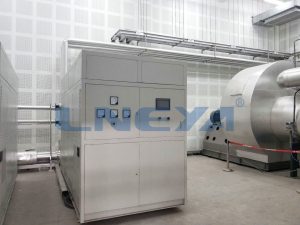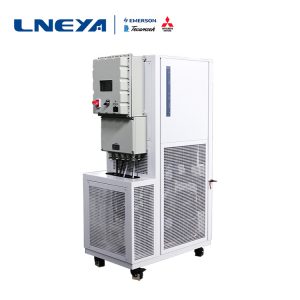Where will the reactor be used? How about the reactor temperature control system?
Generally, non professionals should be confused about the reactor.
The reactor is composed of reactor body, reactor cover, jacket, agitator, transmission device, shaft seal device, support, etc. It is generally understood as a container with physical or chemical reactions. Through the structural design and parameter configuration of the container, the functions of heating and mixing, hydrolysis, neutralization, distillation, evaporation, crystallization, storage, hydrogenation, alkylation, polymerization, constant temperature reaction, cooling and low and high speed mixing required by the process can be realized.
The application scope and scenario of the reactor mainly include the following eight areas: 1. Food agriculture; 2. University test; 3. Biochemical pharmacy; 4. Gold refining industry; 5. Scientific experiments; 6. Bioengineering; 7. Industrial factory; 8. New material industry.
The temperature control of the reaction kettle is divided into two types: rising temperature and cooling temperature (depending on whether the inside is exothermic reaction or endothermic). Steam, molten salt or other heating media are used for heating, while cooling is generally cooling water or other media. Whether heating or cooling, heating or cooling media flow control is used, manually open and close the valve, or use automatic control to control heating The control valve of cooling medium regulates the flow to control.
The whole liquid circulation is a totally closed system.
1. Speed block for temperature rising and cooling, controlling chemical reaction system
2. The heat conduction medium will not absorb water vapor at low temperature
3. The heat conduction medium will not be oxidized, discolored, or browning
No oil mist is generated at high temperature.
4. Thermodynamic changes of the fast response system, whether it is a severe endothermic or exothermic reaction, will not have temperature control hysteresis.
5. A heat conduction medium can be used for low temperature and high temperature, and can be used in the temperature range of – 120 ℃ – 350 ℃.
Recommandations connexes
-
What are the applications of external circulation oil chillers?
1118External circulation oil chillers are mainly used in the industrial field, especially suitable for situations that require cooling oil to maintain normal equipment operation and extend equipment service life. The following are some typical...
Voir les détails -
Specific conditions of high and low temperature test of EV (electric vehicle) battery
1297There are mainly 2 types of vehicles:1. Battery for pure electric vehicle2. Fuel cell, dedicated to fuel cell electric vehicles Thermal test: This test is performed to characterize the reaction of cells to the high-temperature environment. a) Adju...
Voir les détails -
Features and applications of vacuum heat sink chillers
718Vacuum heat sink chillers are a type of equipment specially designed to provide cooling in a high vacuum environment, and are typically used in scientific research, semiconductor manufacturing, aerospace, and other fields that require high...
Voir les détails -
Effet de l'évaporateur sur le système de réfrigération dans un instrument spécial pour l'expérimentation à basse température
1268L'instrument spécial d'expérimentation à basse température est l'équipement de réfrigération et de chauffage du LNEYA pour le laboratoire. L'importance de l'évaporateur est évidente. Quel est donc l'effet de l'évaporateur sur le système de réfrigération ? Selon les di...
Voir les détails
 LNEYA Industrial Chillers Fabricant Fournisseur
LNEYA Industrial Chillers Fabricant Fournisseur












